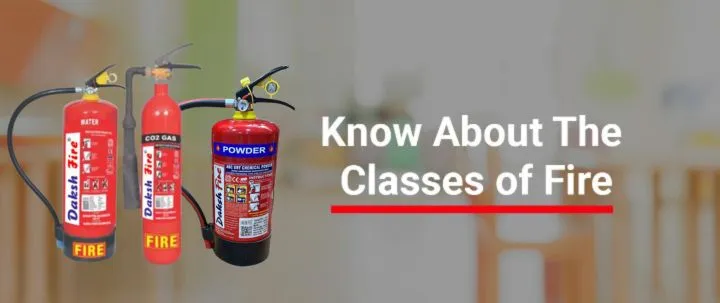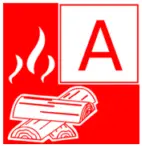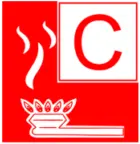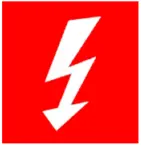Fire events can be quite damaging. Not only does it harm buildings and machinery, but it also burns, injures, and sometimes even kills individuals. Adopting fire protection strategies is the greatest way to prevent fire occurrences. The more effective your firefighting strategy is, the simpler it will be for you to prevent disastrous mishaps.
Every fire is different. Fires can present a variety of risks and hazards. The incorrect fire extinguisher type could cause more harm than good. There are six different Classes of Fire, and to properly put them out, each should be attacked in a different way.
The greatest method to ensure that a fire does not affect you or your company is to prevent it. You should have a plan in place for dealing with flames if they do occur in addition to taking steps to prevent fires from igniting in the first place. Considering how rapidly a fire may spread if it does start. It is not always easy to figure out how to put out a fire before it spreads.
You must comprehend that not all fires are created equal in order to do that. Before selecting a fire extinguisher for yourself, it is always preferable for you to be aware of the various Classes of Fire.

Classes of Fire
Depending on the kind of “fuel” that is on fire, there are Six main Classes of Fire.

- Class A Fire (Solids)
Class A fires are the most common of the 6 different Classes of Fire. Any house’s surroundings are very likely to have the combustible that starts class fires. The most prevalent fuel source for this type of fire includes paper, wood, cardboard, etc. The substances that cause fires are difficult to get rid of.
Foam and water extinguishers are the best types of extinguishers for class-A fires. The majority of fires involving solids can be put out using water, making it the most used form of extinguisher. It should never be used next to electrical equipment though because it is a conductor.
Extinguishers made of power or wet chemicals have a restricted application for Class A fires.

- Class B Fire (Liquids)
Class B flames are caused entirely by liquid fuel. In industries and workplaces, the majority of liquids, fluids, and chemicals are either explosive or inflammable.
The “B” Classes of Fire involve flammable liquids and gases, particularly fuels made of petroleum or petroleum-based materials like paint, kerosene, and petrol. The easiest technique to put out these kinds of fires is by utilizing foam or CO2 fire suppression equipment to smother them or remove oxygen from the air.
You must choose either powder or foam fire extinguishers for your location in order to put out this type of fire.

- Class C Fire (Gases)
Gases are involved in class C fires. LPG, natural gas, or any other gas that produces an explosive or combustible environment can all start this kind of fire.
Working with gas is risky and raises the possibility of a fire. Make sure that gas work is done by qualified people, and preserve stored gases in sealed containers in a safe location.
Although Class C fire extinguishers are an option, turning off the gas supply is the most effective approach to put out a Class C fire. Having said that, the best option for putting out this kind of fire is a powder fire extinguisher.

- Class D Fire (Metals)
Metals are not typically thought of as combustible substances, however, some kinds of metal, like sodium, can. Metals are effective conductors and aid in the spread of fire. When metal joists and columns are present in a fire as structural elements, all metals will soften and melt at high temperatures, which might result in building collapse.
To put out metal fires, dry powder extinguishers were created. Depending on the kind of metal risk the extinguisher is intended for, the powder within may change. Sand or dry dirt can occasionally be used to put out small metal fires.

- Electrical Fire
Since electricity serves more as an ignition source than a fuel, this fire is not precisely in the Class E category. Fires in active electrical equipment, however, pose an extra risk.
These Classes of Fire can be prevented by making sure electrical equipment and installations are properly installed, inspected, and maintained.
Although water should not be used to put out an electrical fire, other types of fire extinguishers can. The carbon dioxide (CO2) extinguisher is the finest fire extinguisher to use on electrical fires. Low-voltage settings are suited for some dry powder extinguishers.

- Class F Fire (Cooking Fats & Oils)
A Class F fire may be caused by deep-fat frying and spills of flammable oils close to heat sources in kitchens. Deep-fat fryers in commercial kitchens are where this kind of fire occurs most frequently, however, it can also occur in a home.
The heat from the oil makes these fires difficult to put out, and using the wrong kind of extinguisher will spread the flames and the burning oils and fats.
Wet chemical extinguishers are the only kind that are permitted to be used on cooking oils and fats. You might also use a fire blanket for small class F fires.
To Wrap Up
In conclusion, effective fire safety requires an understanding of the various Classes of Fire. We can apply the proper extinguishing techniques and choose the necessary firefighting equipment by classifying fires according to their fuel sources. Remember that the likelihood of successfully controlling and extinguishing the blaze increases when the proper strategy is used to tackle each Classes of Fire. It will be simpler for you to select the appropriate Fire extinguisher for the appropriate region of your facility now that you are aware of the different Classes of Fire. Additionally, it will be beneficial if you use the appropriate equipment to extinguish the fire.
📢 Follow us on Instagram and Stay updated with the latest fire safety tips, equipment insights, and emergency readiness advice.
